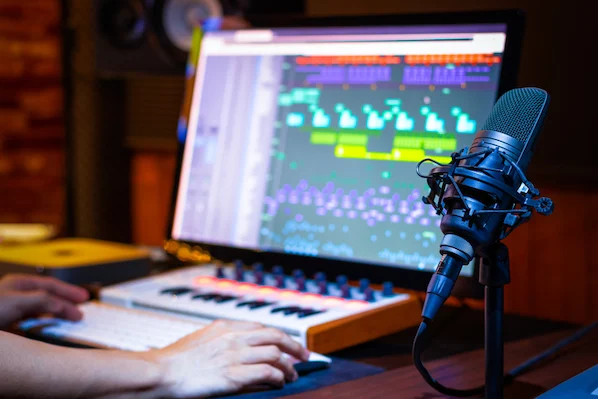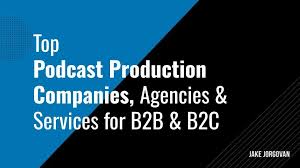
Best Podcast Hosting Platforms Achieving clear and engaging audio starts with the right tools, and one of the best options on the market is the CrumplePop Voice Enhance plug-in. By making voices sound clearer, more distinct, and warmer, Best Podcast Hosting Platforms more easily with your content.Voice Enhance is an AI-driven plug-in that works directly within your DAW (digital audio workstation) to elevate any vocal recording.Despite its powerful capabilities, it’s remarkably easy to use. Simply highlight the section of audio you want to improve, open the plug-in, adjust the enhancement level, and let it work its magic. The process is straightforward, yet the results are impressive.Compatible with VST3, AU, and AAX formats, Voice Enhance works seamlessly with most DAWs and operating systems.For podcasters aiming for top-notch audio quality, Voice Enhance is the go-to solution.
How to start a podcast:
When recording your podcast, think carefully about where you’ll be doing the recording. Different spaces come with different challenges, and not everyone can record in a professional studio setting. gf you’re recording indoors, choose a quiet room that’s free from background noise or interruptions. A smaller room is usually best, as it helps reduce echo and improves sound quality.Try to stay away from rooms with reflective surfaces like windows or mirrors, since these can amplify echo and make your audio sound less clear.
If you’re recording outdoors, do your best to minimize background sounds such as traffic, people talking, or wind. Selecting the right microphone is especially important in this setting — it can dramatically reduce unwanted noise. You’ll want your speakers or guests to be heard clearly, not drowned out by passing cars or barking dogs!
Podcast recording equipment is one of the most crucial factors in producing great audio. While XLR microphones have long been considered the gold standard, this distinction is fading as USB microphones continue to improve in quality.
If you’re using a USB microphone, make sure any companion software is properly configured to capture the best possible sound. For those with an XLR microphone, it’s worth investing in a reliable audio interface—a higher-quality interface can significantly enhance the overall clarity and richness of your podcast’s audio.
Selecting the Right Gear
These days, you can find excellent recording equipment at surprisingly affordable prices. However, spending a little extra on a higher-end microphone can often lead to noticeable improvements in sound quality.
Picking the appropriate type of microphone is equally important. When recording indoors, use a sturdy microphone stand—whether it’s a desk or floor model—to help maintain a steady distance from the mic and ensure consistent audio levels. For outdoor recording, a lavalier microphone can be a great option to reduce ambient noise.No matter what kind of mic you choose, it should suit your recording environment. Having quality podcasting gear can be the difference between producing professional-sounding audio and ending up with something unpleasant to listen to.
Podcast editing software typically includes multi-track recording capabilities, enabling you to capture each speaker on a separate channel. This is crucial because, during post-production, you’ll want the flexibility to adjust each voice individually.If one guest’s audio is too quiet, you can easily boost their level, while someone who’s too loud can be turned down for balance. Be mindful of the audio settings for each track to ensure you’re capturing the best possible sound from every participant.Keeping everyone on separate tracks will streamline the editing process and lead to a more polished, professional-quality final mix.
Best podcast hosting platforms make it easy to produce high-quality episodes, but one of the simplest ways to ensure your recording goes smoothly is to do a quick test recording before starting your actual session. By doing this, you can catch and fix many problems that might otherwise go unnoticed.When recording your podcast at home, it’s common to overlook background noises because you’ve grown accustomed to them. Sounds like a refrigerator humming, an air conditioner running, or even distant traffic often fade into the background of your daily life. However, these noises can easily be picked up by your microphone.A short test recording will instantly make you aware of such unwanted sounds. You’ll be surprised how much background noise your mic detects and how easily you can reduce or eliminate it once you notice. The cleaner your initial recording, the less effort you’ll spend on editing and post-production later.
This test run also helps you set your audio levels correctly. You want a signal that’s strong but not so loud that it clips. Aim for your loudest moments to peak around -2 dB (decibels) — this ensures a powerful, clear sound without distortion and leaves enough room for any post-processing adjustments you may need.
Podcast scriptwriting tip: Here’s a small but powerful trick that can make your editing process much smoother. Before you start talking, let your DAW record a few seconds of quiet. Of course, it’s never completely silent — what you’re actually capturing is the natural sound of your recording space.This short moment of room tone is extremely valuable when you use your DAW’s noise reduction tool. It helps the software analyze what your background noise sounds like so it can better separate it from your voice. The clearer that distinction, the cleaner and more polished your final audio will be
Podcast interview techniques are a skill, and like any other, the more you practice, the stronger they become. When you’re just beginning, it takes time to get comfortable speaking, discover engaging ways to express your ideas, and develop a natural rhythm in conversation.Hosting an interview or leading a discussion on a podcast isn’t the same as chatting casually with friends — it requires learning how to manage the flow, knowing when to pause or let your guest speak, and developing your unique interviewing style.Many beginners feel a bit awkward at first, but consistent practice helps you sound natural and confident once the microphones are on. When you believe in your abilities, your audience will pick up on that confidence, and your podcast will come across as polished, engaging, and professional.
Firstly, ensure that you understand the different ways to generate income from your podcast. If you’re creating regular episodes, make sure your content is valuable and engaging enough to attract a loyal audience, as this forms the foundation for any monetization strategy.
It’s also worth exploring sponsorships rather than relying solely on ad revenue if possible. Sponsorships are often easier to manage and can generate more consistent income than ads. However, regardless of which method you choose, ensuring it aligns with your audience’s interests will make a big difference to your earning potential.
Building Consistent Revenue
You need to make sure that, as much as possible, your monetization efforts remain steady over time. This means maintaining consistent listener numbers, regularly engaging with your audience, and producing quality content. It’s easy to lose focus on consistency when experimenting with new income streams—if you shift your format too often, chase trends, or neglect your release schedule, your audience may lose interest. Staying consistent is key to long-term success.
Podcast branding strategies can be a crucial factor when it comes to building a successful and memorable podcast identity.There’s a wide selection of digital audio workstations (DAWs) and tools available—some are designed with musicians in mind, while others focus specifically on podcasting and come with built-in features to make the process easier.
Certain platforms, like Adobe Audition, offer exceptional audio quality but come with a steep learning curve that may take time to master. On the other hand, simpler tools such as Audacity are easier to learn but may lack some of the advanced capabilities that professional podcasters need.Stay Within Your Budget
Your budget should also play a role in your decision. Investing in high-end editing software isn’t always necessary if you’ll only use a few of its tools—more affordable or even free options might serve you just as well. However, if your goal is to create a premium, highly polished podcast brand, then investing in professional-grade software could be worthwhile.
Every podcast brand has unique needs and goals, so be sure to evaluate your specific situation carefully when deciding on the best approach.
Podcast marketing ideas: Wearing headphones can significantly improve your ability to catch any background noises or stray sounds during recording. They help you better monitor how all speakers sound and prevent echo or “double voices” from being captured on the track.
They also let you hear your own voice in the same way as your guests or co-hosts. While not everyone enjoys listening to their own voice, this practice is essential for maintaining consistent audio quality and a professional listening experience.
Podcast marketing ideas: It’s natural to make small mistakes while recording—someone might trip over words, cough, or lose their train of thought. To make post-production smoother, use clear audio cues whenever these moments happen. This makes it easy to find and fix errors later during editing, saving time and keeping your episode polished.



